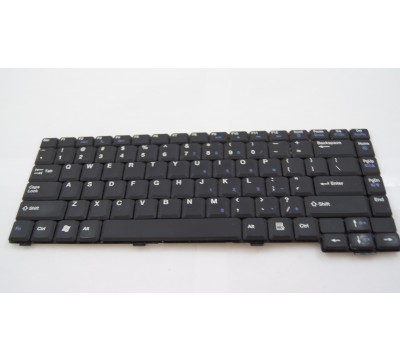Optional Offer for DriverDoc by Solvusoft | EULA | Privacy Policy | Terms | Uninstall
Sony eSupport - Model Support. Don't miss what's new. Be among the first to get the latest Sony news in your inbox. Phone and Tablet Apps The best of what Sony has to offer on iOS or Android. Download our apps. SONY VGN N160G DRIVER FOR MAC - M with standard type ac adapter plug tip. See PJ for the 65 watt version. Try searching for the model Series instead of the exact model number, example: Compatible models coming soon.
Konica Minolta Drivers For Mac


ABOUT SSL CERTIFICATES |
| Manufacturer: | Sony | |
| Hardware Type: | Notebook | |
| Model: | VAIO | |
| Series: | PCG-GRZ610 | |
| Compatibility: | Windows XP, Vista, 7, 8, 10 | |
| Downloads: | 82,572,108 | |
| Download Size: | 3.4 MB | |
| Database Update: | ||
| Available Using DriverDoc: | Download Now | |
Optional Offer for DriverDoc by Solvusoft | EULA | Privacy Policy | Terms | Uninstall | ||
This page contains information about installing the latest Sony VAIO PCG-GRZ610 driver downloads using the Sony Driver Update Tool.
Sony VAIO PCG-GRZ610 drivers are tiny programs that enable your Notebook hardware to communicate with your operating system software. Maintaining updated Sony VAIO PCG-GRZ610 software prevents crashes and maximizes hardware and system performance. Using outdated or corrupt Sony VAIO PCG-GRZ610 drivers can cause system errors, crashes, and cause your computer or hardware to fail. Furthermore, installing the wrong Sony drivers can make these problems even worse.
Recommendation: If you are inexperienced with updating Sony device drivers manually, we highly recommend downloading the Sony VAIO PCG-GRZ610 Driver Utility. This tool will download and update the correct Sony VAIO PCG-GRZ610 driver versions automatically, protecting you against installing the wrong VAIO PCG-GRZ610 drivers.

Samsung Printer Drivers For Mac
In buying a new notebook computer, I had three criteria: I wanted a 15 inch monitor, a processor speed of at least 2 GHz, and a price under [$]. Only a handful of computers satisfy all three of these criteria, and ultimately it came down to a choice between the Vaio and the Toshiba Satellite (2410/2415), which cost virtually the same but have slightly different features. I have used many laptops over the years, and the Vaio has significant plusses and minuses in comparison with other notebooks I've used.The Vaio has a slim, compact design, a very bright and clear display, and a very nice full-sized keyboard. It has 32 MB of video memory (compared with 16 for the Satellite), and it handles graphics-intensive tasks with ease (I'm not a high-end gamer, though, and I doubt that this computer would be sufficient for that purpose). It is pleasant to use and it has some decent built-in tutorials to help you navigate the many multimedia applications. The Satellite is a little more 'chunky' looking and the display did not look as sharp or as bright when I saw the two computers side by side.
The Vaio does have some limitations. Whereas the Toshiba Satellite has a 'mobility' processor (designed for a laptop, it runs at a lower temperature and requires less cooling), the Vaio has a standard Pentium 4 processor. As a consequence, the fan operates continuosly with the Vaio, and if you are doing anything processor-intensive, the fan becomes quite loud. In a quiet room, such a library or office, it would be clearly audible for 30 or 40 feet at top speed. It is much louder than the fan on any notebook computer I've ever used. When operating normally (for example, doing low-demand tasks such as word processing) it is not unusually loud. The fan can be switched to a 'quiet' mode although I believe that this also slows the processor speed. Surprisingly, there are no external controls for playing CDs. On the Toshiba (and most notebooks I've used), you can play CDs and adjust the volume using controls on the exterior of the case, without turning on the computer. With the Vaio, you can't. Also, the Vaio does not come standard with a 3.5 inch floppy drive. I almost never use floppies, but sometimes they are just the only convenient way to get a file onto your computer. Both the Toshiba and the Vaio come with three USB ports; in the case of the Toshiba they are USB 1.1. I believe that they are USB 2.0 on the Vaio, although I am not certain of that.
A limitation of both computers is that they use the 'touch pad' pointing device. I had one of these on my last computer and I hated it from day one. They are just not accurate enough for long-term use and clicking the right mouse button is very cumbersome. The IBM-style 'pencil eraser' pointing device is a much better mouse substitute for a notebook computer and I wish that more computers would adopt something similar. I usually use a plug-in external mouse so it's not a huge problem for me, but if you frequently need to operate the computer in cramped conditions or where you do not have a desk or hard surface on which to use an external mouse, consider buying an IBM for the pointing device. Also, the battery life on both of these computers is relatively short.
The Vaio packs a lot of power and features into a relatively low price. It is a good computer for people who need to be able to take their work with them but who are usually able to sit down at a desk and plug in the AC power and an external mouse. Because of the touch pad, the short battery life, the lack of a mobility processor, and the lack of a floppy drive, it is probably not the best for someone who needs maximum mobility and flexibility.